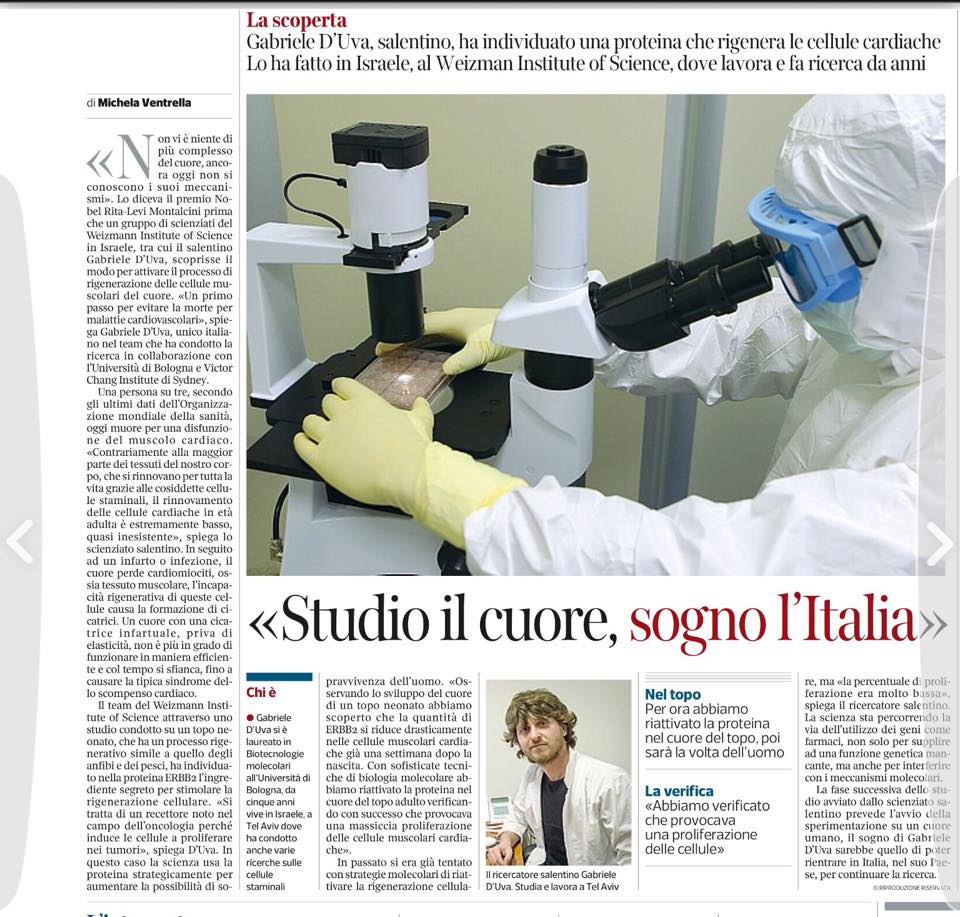We were invited for a lecture on “HER2 and heart regeneration” at the Congress “Mechanisms, diagnosis and treatment of cardiovascular toxicity in oncology” organized by IRST-IRCCS (October 09, 2015, Forlì, Italy).
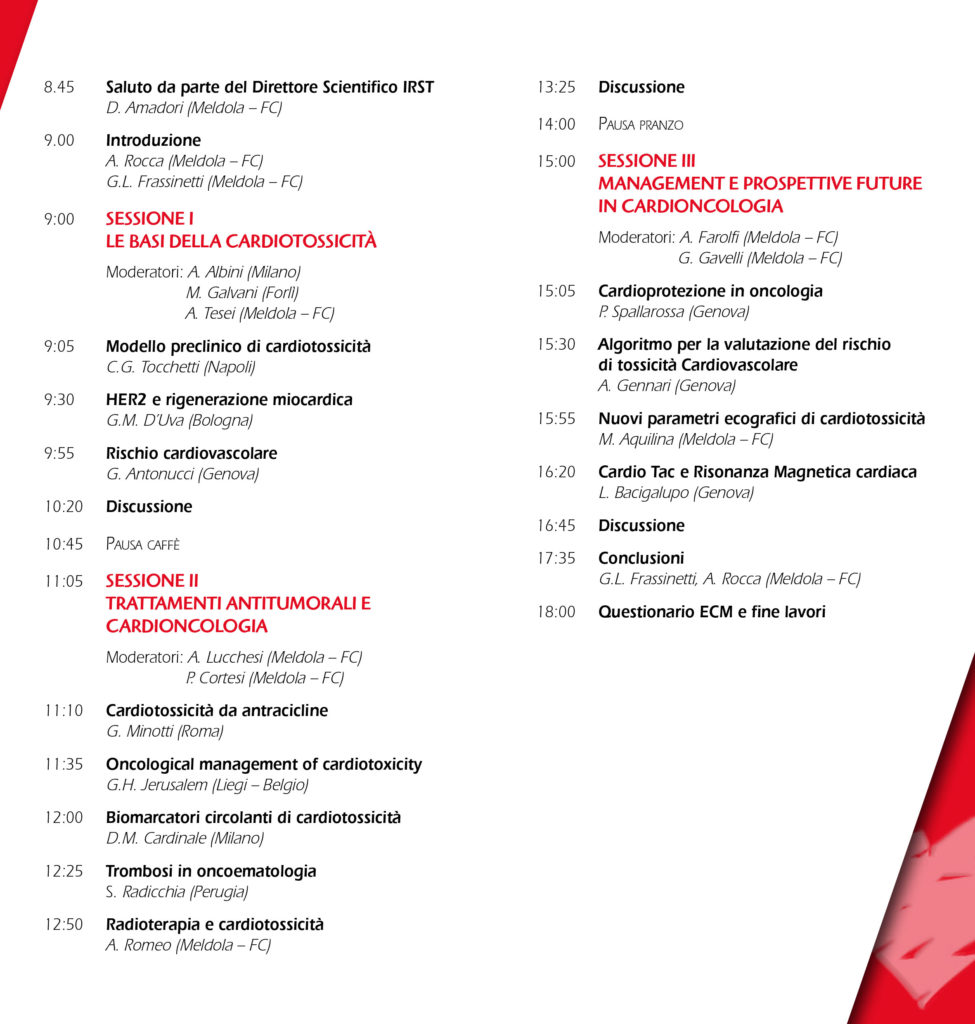

Cardiac regeneration, cancer progression and cardiotoxicity of anticancer therapies
We were invited for a lecture on “HER2 and heart regeneration” at the Congress “Mechanisms, diagnosis and treatment of cardiovascular toxicity in oncology” organized by IRST-IRCCS (October 09, 2015, Forlì, Italy).

We were selected for the oral presentation of our project entitled “The key roles of ERBB2 in cardiomyocyte proliferation and heart regeneration” at ABCD Congress 2015, organized by the Italian Association of Cell Biology and Differentiation (ABCD) on September 17-19, Bologna (Italy).
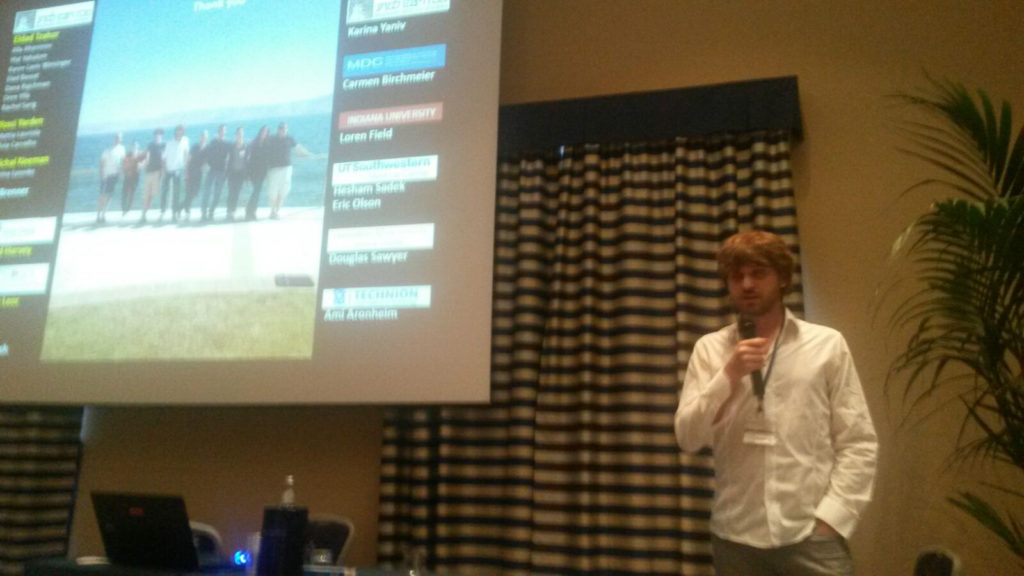
We were selected for the oral presentation of our project entitled “The key roles of ERBB2 in cardiomyocyte proliferation and heart regeneration” at SIPMeT Young Scientist Meeting 2015, organized by the Italian Association of Pathology and Translational Medicine (11-12 September 2015, Alba, Italy).


Growth factors acting through receptor tyrosine kinases (RTKs) of ERBB family, along with steroid hormones (SH) acting through nuclear receptors (NRs), are critical signalling mediators of cellular processes. Deregulations of ERBB and steroid hormone receptors are responsible for several diseases, including cancer, thus demonstrating the central role played by both systems.
This review will summarize and shed light on an emerging crosstalk between these two important receptor families. How this mutual crosstalk is attained, such as through extensive genomic and non-genomic interactions, will be addressed. In light of recent studies, we will describe how steroid hormones are able to fine-tune ERBB feedback loops, thus impacting on cellular output and providing a new key for understanding the complexity of biological processes in physiological or pathological conditions.
In our understanding, the interactions between steroid hormones and RTKs deserve further attention. A system biology approach and advanced technologies for the analysis of RTK-SH crosstalk could lead to major advancements in molecular medicine, providing the basis for new routes of pharmacological intervention in several diseases, including cancer.
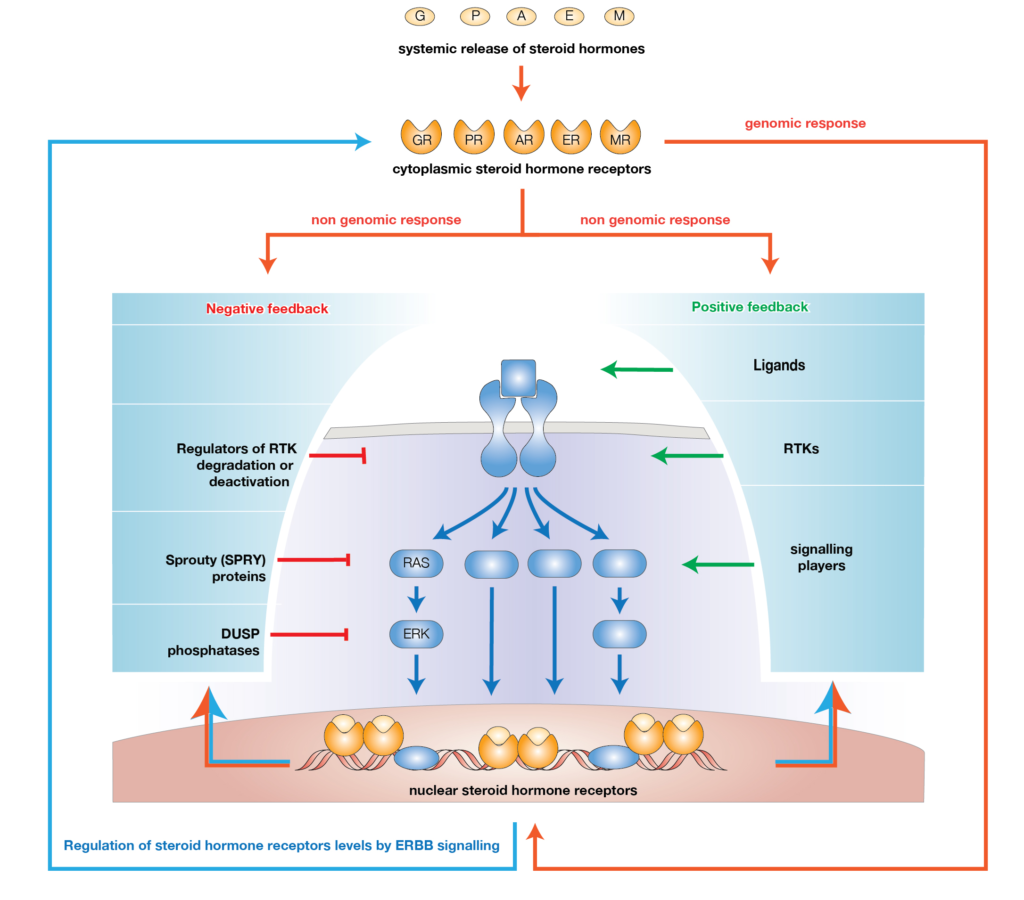
Go to the full article: D’Uva G* and Lauriola M*. Towards the emerging crosstalk: ERBB family and steroid hormones. Seminars in Cell & Developmental Biology, 2016 (*co-corresponding authors)
National Association for Biomedical Research (NABR): The Essential Need for Animals in Medical Research
“Rodent research is creating an exciting horizon for cardiovascular disease treatment. Recent research with rats and mice has alerted scientists to the possibility of using growth factors (ref.21) and stem cells (ref. 22) to regenerate cardiac tissue after a heart attack. […] Human medicine would not be where it is today without the incredible contributions of these small yet mighty animals. […]
Ref. 21: D’Uva G, Aharonov A, Lauriola M, et al. Nat Cell Biol. 2015;17(5):627-38
Ref. 22: Ellison GM, Vicinanza C, Smith AJ, et al. Cell. 2013;154(4):827-42″
Nature Reviews Drug Discovery: “Research Highlights”
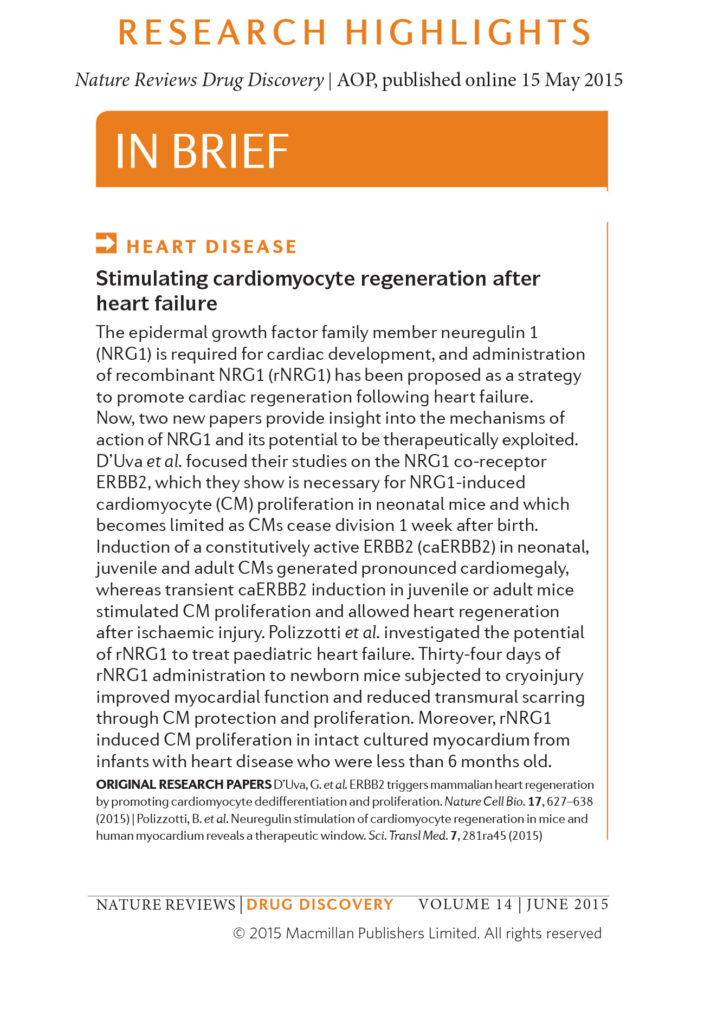
Israel Hayom: Israeli scientists make revolutionary discovery, regenerated heart cells
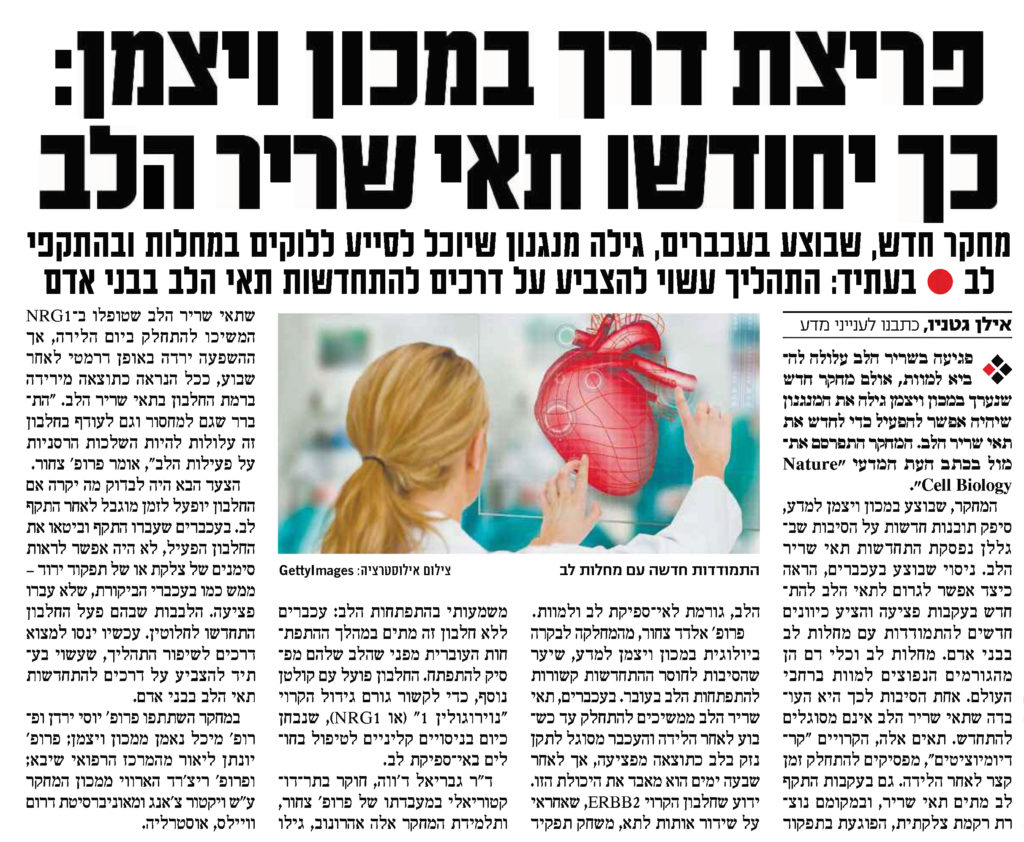
Corriere del mezzogiorno: “I study the heart, I dream Italy”
